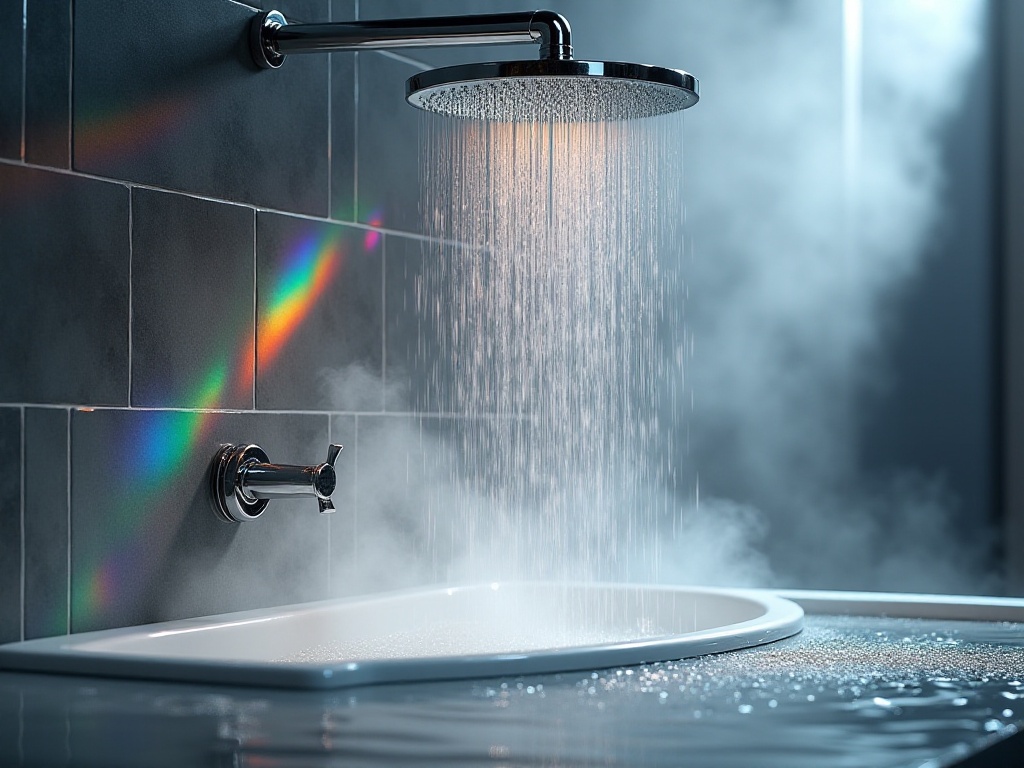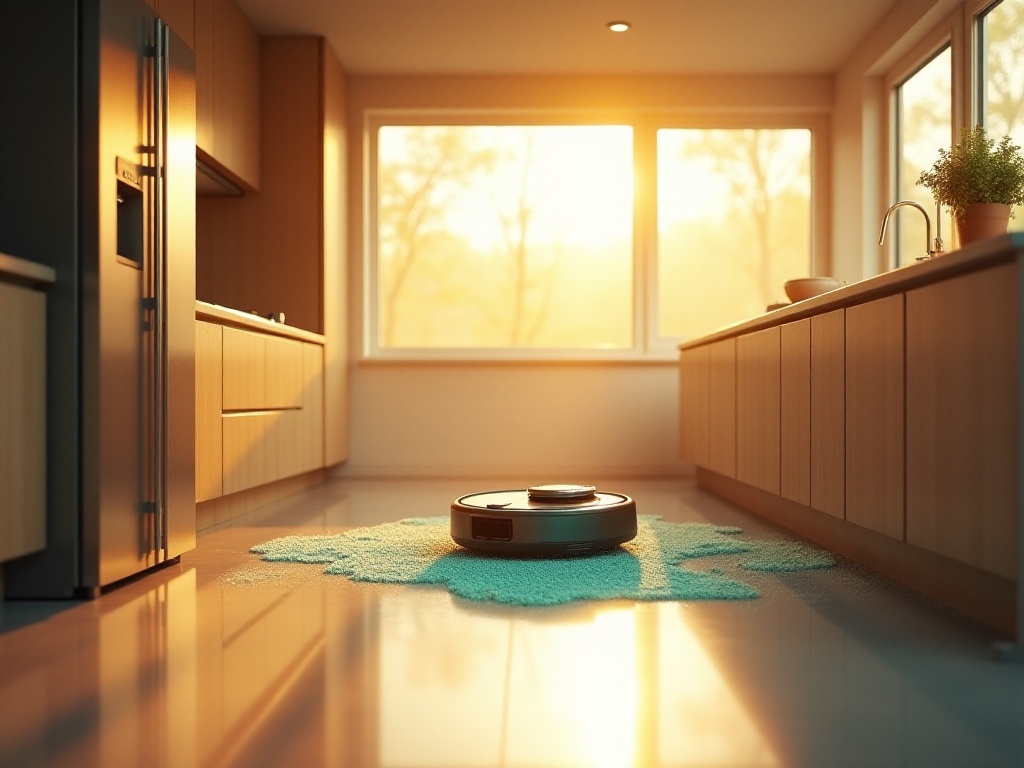Preface
That day, I stood at the doorstep of my new house, holding the heavy keys, my heart racing. When I pushed open the door, sunlight streamed in through the floor-to-ceiling windows, filling the entire space with intoxicating brightness. The smell of the new home mixed with fresh air made me want to take deep breaths. That feeling was like owning the whole world.
However, as time passed, traces of life began to show in this perfect space: the grout between bathroom tiles started turning black, wooden floors showed scratches from moving furniture, and the air conditioner gave off a faint odd smell when running. As a home blogger who has experienced everything from renting to buying, from novice to expert, I deeply understand every homeowner's concerns. Today, let me share some practical home maintenance tips from my personal experience.
Safety First
It was a cold winter night, with the north wind howling outside. I was preparing for bed when I suddenly heard a sharp alarm from next door. When I ran out to check, it turned out that Auntie Wang's smoke detector had gone off. Later we discovered that her old electric heater had an electrical fault, nearly causing a fire. This incident left a deep impression on me and gave me a new understanding of the importance of home safety equipment.
The fire department's data is alarming: more than two-thirds of annual household fires occur due to failure to detect hazards in time. More heartbreaking is that these accidents could have been prevented through simple precautionary measures. Now, I treat monthly safety checks as a ritual: at the beginning of each month, I test both the smoke detector and carbon monoxide detector buttons to ensure they're working properly. During the annual Spring Festival cleaning, I replace the batteries in these "guardian angels."
Besides these basic checks, I regularly inspect the house's electrical wiring. During last year's renovation, I specifically asked the electrician to install a main circuit breaker with ground fault protection. Now, I regularly test the ground fault protector to ensure it can cut off power when danger occurs. I also frequently check the outlets, replacing them immediately if I find any that are hot or loose. These small details provide the best protection for family members.

Air Guardian
Air conditioners, these indispensable modern appliances, are actually quite delicate. I remember last summer during the hottest days, my air conditioner suddenly lost effectiveness, and the room temperature wouldn't drop. It was during a heat wave, and repair technicians were swamped, with appointments backed up for a week.
When the technician finally came and opened the machine, I was shocked: the filter was covered in dust as thick as cotton, completely blocking the air intake. The technician said this situation was common but often overlooked. It turns out that the air conditioner filter is like a human nose, requiring regular "cleaning" to function properly.
Since then, I've made it a rule: check the air conditioner filter at the end of each month. If I notice obvious dust, I clean it immediately. Every three months, I do a thorough cleaning and maintenance. The method is actually simple: first vacuum the surface dust, then gently wash with warm water and neutral cleaner, finally let it dry before reinstalling.
The changes from this small habit surprised me: not only did the air conditioning work better, but it also ran more quietly. Most notably, the electricity bill was nearly 20% lower! It turns out that a clean filter not only makes the air fresher but also saves money.
Now, I've developed another habit: opening windows for 15 minutes of ventilation morning and evening, letting fresh air in. I maintain this habit even in winter. During ventilation, I turn off the air conditioner and turn it back on after finishing. This not only keeps indoor air fresh but also prevents various problems caused by excessive indoor humidity.

Fighting Mold
Speaking of mold, I must mention my long battle with the bathroom. When I first bought the house, I discovered black mold in the tile grout. I tried various cleaners, but none were completely satisfactory. After researching extensively, I learned that bathroom mold isn't simply a cleaning issue but requires a systematic solution.
First, I installed a 24-hour ventilation fan in the bathroom to maintain air circulation. The 15 minutes after each shower are crucial, when bathroom humidity is highest and most conducive to mold growth. I ensure the fan runs at full power, sometimes even opening windows for additional ventilation.
Second, I started using a dehumidifier to control bathroom humidity. I bought one with a humidity display, set at 60% humidity, automatically activating when exceeded. Though this investment wasn't small, the results were significant: bathroom walls and tiles stay dry, leaving nowhere for mold to hide.
For existing mold spots, I discovered an eco-friendly and effective method: white vinegar. Weekly wiping of tile grout with white vinegar not only kills mold but prevents new growth. The specific method is: pour vinegar into a spray bottle, spray directly on mold spots, let sit for 30 minutes, gently scrub with a brush, then rinse thoroughly with clean water.
To solve the problem thoroughly, I also waterproofed the bathroom walls and floor. I chose a nano-level waterproof coating, and the results exceeded expectations: water beads up and rolls off the walls without seeping into tile grout. Though this project was expensive, considering I won't have to fight mold daily anymore, the investment was worth it.

Pipe Guardian
Plumbing issues truly inspire love and hate: love for the convenience they bring to our lives, hate for the troubles they can cause at any time. I remember last winter, being woken up in the middle of the night by a dripping sound. When I got up to check, the pipe joint under the kitchen sink was constantly dripping, forming a small puddle on the floor.
That experience made me realize the importance of prevention. Now, I conduct a comprehensive inspection of all house pipes every quarter. Key inspection points include: pipe joints under sinks, toilet inlet and outlet pipes, washing machine inlet pipes, and water heater connections.
The inspection method is actually simple: feel the joints for moisture, look for water stains or rust on pipe surfaces. If something suspicious is found, wipe it with tissue paper and check again later for water marks. This simple method has helped me discover many potential leaks early.
For discovered leaks, I've developed a set of emergency procedures. First, shut off the main water valve - this is the most important first step. Then, use towels or rags to dry the leaked area. If it's a pipe joint leak, it can be temporarily fixed with special pipe sealing tape. I keep this tape in my toolbox, which comes in handy during critical moments.
However, emergency fixes are only temporary measures. For serious leaks, professional plumbers should be called for repairs. I've established a long-term relationship with an experienced local plumber who can help whenever problems arise. This investment is worthwhile because a small leak, if not properly handled, can develop into a bigger disaster.
To extend pipe life, I've also taken some preventive measures. For example, I installed filters at pipe inlets to filter impurities and scale from tap water. Replacing filter cartridges every six months is a bit troublesome but greatly reduces the risk of pipe blockage and corrosion.
I've also adjusted some usage habits. For instance, not pouring oil down drains as it causes blockages; not using strong acid or alkaline cleaners as they corrode pipes; regularly using professional drain cleaners to prevent blockages. These small habits, when maintained long-term, keep the plumbing system running smoothly.

Storage and Organization
Storage organization isn't just about making the house look neat, it's about making life more convenient and comfortable. I remember experiencing a chaotic period when first moving in: clothes piled everywhere, kitchen utensils impossible to find, books and documents scattered about.
After continuous exploration, I finally found a storage method that suits me. First, I adopted the "frequently used items easily accessible" principle: most used items are placed in the most convenient positions. For example, commonly used spices are placed on the shelf next to the stove for easy reach; frequently worn clothes are placed in the most accessible wardrobe positions.
Second, I assigned every item in the house a fixed "home." This not only makes things easy to find but also makes returning items to their original places a natural habit. In the wardrobe, I use different storage boxes to categorize clothes: separate areas for tops, pants, and underwear. In the study, I categorize books by frequency of use and topic, keeping frequently referenced books on nearby shelves, with other books stored by subject.
I'm also thoughtful in choosing storage tools. I selected some transparent storage boxes so I can see what's inside without opening them. In the wardrobe, I use vacuum compression bags for seasonal clothes, saving space while preventing insects and moisture.
To maintain the effectiveness of the storage system, I do a major organization every quarter. Store away infrequently used items, handle damaged items promptly, and clear out expired items. This habit not only keeps the house consistently tidy but also helps discover potential problems early, like moldy clothes or damaged appliances.
During the organization process, I discovered an interesting phenomenon: when items in the house are arranged orderly, mood also becomes particularly pleasant. This must be the principle of "organization brings psychological comfort." Now, whenever I open a drawer and see items neatly arranged inside, I feel a genuine sense of satisfaction.
Maintaining a home is like nurturing a relationship, requiring persistent dedication and careful attention. But when you see everything in order and full of vitality, all the effort becomes worthwhile. This is my understanding of home: it's not just four walls, but a harbor carrying our hopes for life.
Let's work together to keep every home forever new, making each day full of anticipation and surprises. After all, a well-maintained home is the warmest harbor and the sweetest witness to life.




